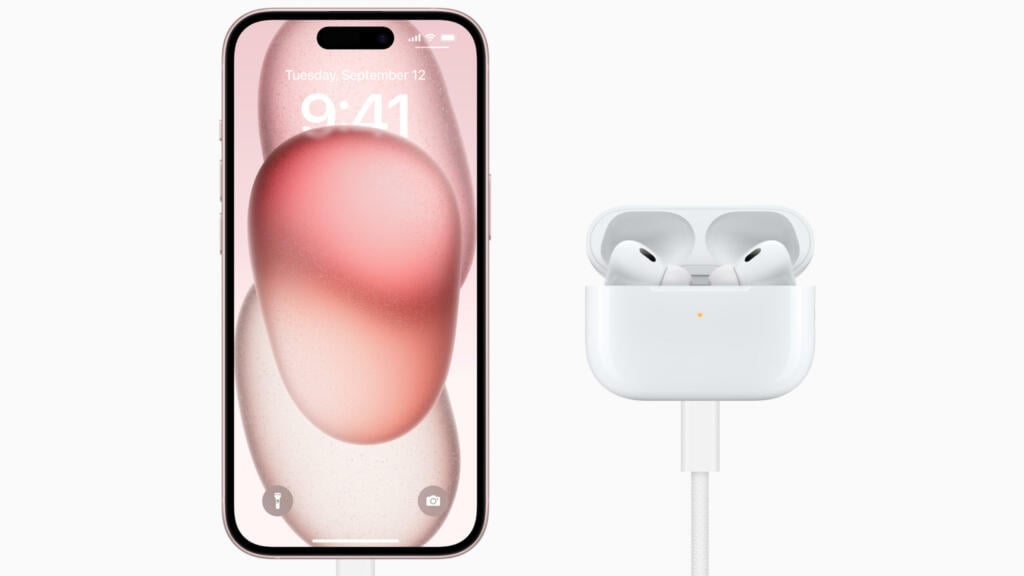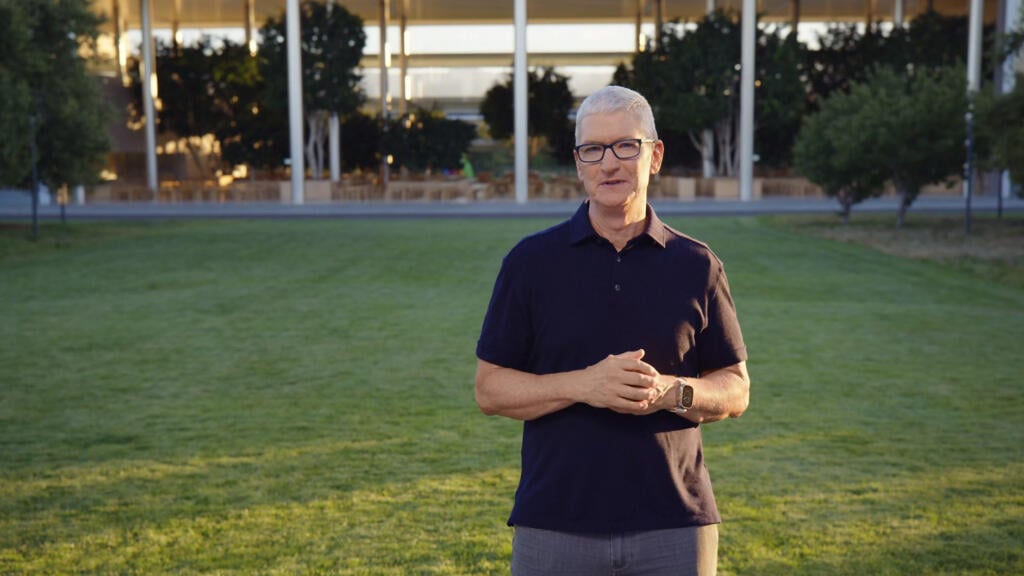
AI could be behind Apple’s next big health and fitness development
Steven Shaw
New iPhones come with a different way to charge and connect them. Here’s what you need to know.
The new iPhone 15 range includes one of the biggest changes to Apple products we’ve seen in years: the Lightning connector that you use to charge your iPhone and connect it to your computer, is gone.
In its place there’s a USB-C connector, just like you’ll find in recent MacBooks and iPads, Samsung phones and Amazon’s latest Kindles. That’s a good thing, but it does raise a few issues too. Here’s what you need to know.
The new iPhone 15 range includes one of the biggest changes to Apple products we’ve seen in years: the Lightning connector that you use to charge your iPhone and connect it to your computer, is gone.
In its place there’s a USB-C connector, just like you’ll find in recent MacBooks and iPads, Samsung phones and Amazon’s latest Kindles. That’s a good thing, but it does raise a few issues too. Here’s what you need to know.
 Credit: Apple
Credit: AppleUSB (short for Universal Serial Bus) is a global standard for connecting and charging devices such as phones and tablets.
It’s been around for decades: the first USB connectors came out in 1996. USB-C, or USB Type C to give it its Sunday name, is the latest incarnation. It’s been around since 2014.
A USB-C connector is small, slim and double-sided, so you don’t get the USB dance where no matter what way you put the cable in, it always seems to be the wrong way round. The cables are much less prone to fraying than Lightning too.
USB-C is capable of much faster data transfer and much faster charging than the older USB standards.
The Lightning port first appeared on the iPhone 5 in 2012

Lightning is old: the first iPhone to get a Lightning connector was 2012’s iPhone 5, and technology has got an awful lot better in the 11 years since.
But Apple’s reason for moving is legal rather than technical. The EU has mandated that battery-powered mobile devices sold in Europe should have USB-C.
If you’re like us you probably have a drawer or box full of old chargers somewhere, none of which work with anything else. By making everybody go for USB-C, the EU hopes to make that a thing of the past and prevent a lot of cables and chargers ending up in landfill.
“The key benefit of USB-C is that it’s largely compatible with other technology products and brands” says Nick Porter, Vice President of Product Management at Samsung UK.
“It means for consumers there is ease of use, reduced costs associated with buying multiple chargers, and the added benefit that they don’t need to carry around multiple cables whilst on the move.”
It should also mean cheaper cables and chargers. A two-metre (6ft 7in) Lightning to USB cable from Apple is currently £35 and a 20W wall charger is £19.
The equivalent USB-C connector from a trustworthy brand is £11.99 and the charger is £9.99 (and both are often discounted, whereas Apple products rarely are). With USB-C there’s much more choice, and that competition keeps prices down.
Because USB-C is in almost everything now, it also means you need fewer cables. For example, in our house our iPad is USB-C, and so is our handheld games console. The speaker and Kindle we take out into the garden on nice days are both USB-C too, and so is the handheld vacuum we use to clean up small kitchen messes.
That’s particularly useful when you’re travelling abroad or taking the family in the car. When you have multiple USB-C devices, you can use the same charger and cable(s) for everything, instead of having to find and pack different cables for different devices.
If you shoot a lot of photos or videos, USB-C’s faster speeds are really important. Transferring half an hour of full quality video from an iPhone 14 Pro or Pro Max takes about 50 minutes over Lightning. USB-C cuts that to around five minutes.
Porter notes “People don’t need to spend more on USB-C chargers as they are standard for devices following EU mandatory rules.
“However, for those looking to invest more, the benefits include faster charging times, increased power delivery and quicker data transfer rates for pictures, video, audio and other files.”
For all its joys, USB-C’s downside is that it can make shopping for cables and chargers more complex than it ought to be.
In much the same way that Frankenstein was the name of the doctor and not the monster, the term USB-C is often used wrongly. USB-C only describes the plug, not what you’re plugging in.
A USB-C connector may be attached to a USB 2.0, 3.0, 3.1, 3.2 or USB4 cable – and each of those cables is capable of different levels of power delivery and of different data transfer speeds. USB 2.0 is no faster than Lightning, and doesn’t deliver much power; USB4 with power delivery is state of the art with a price tag to match.
Here’s a real-world example. Our Amazon Kindle ebook reader and our MacBook Pro laptop both have USB-C connectors. But the cable for the Kindle is only USB 2.0, so it’s very slow and delivers only a tiny amount of power.
The cable for our MacBook Pro is USB4, so it’s super-fast and charges the laptop very quickly. It also cost ten times more than the Kindle one.
For your new iPhone, you want USB 3.0 or later with at least 20W for the fastest charging. If you want to use the same cable and charger to recharge your laptop, you’ll need a power output of 60W or more.
Lightning ports and cables changed the charging game when Apple introduced them, as you were able to plug a charging cable in either way round – making it much easier to connect your device, and reducing the chance of damage to the port by attempting to plug in a cable the wrong way round.
This is something USB-C also offers, as Porter explains; “USB-C ports and connectors are extremely robust. The EU mandate for safety covers features like reversible cables which can’t be inserted the wrong way round.
“This is vital as it lowers the likelihood of any damage caused to ports and connectors, which in turn could cause serious problems further down the line for the device and the customer.”
We’d still recommend treating your device and charging cable with care, but in terms of durability USB-C is not a downgrade over the Lightning connector it replaces.
Wireless charging isn’t as fast as cabled charging, but it’s really handy and works beautifully. Instead of having to physically plug a cable into your phone, you instead just place it on a small mat (which is plugged into the mains) and the charging commences.
iPhones have had wireless charging since the iPhone 8 (which arrived in 2017), and since the iPhone 12 they’ve had what Apple calls MagSafe charging. That uses a magnet to attach your phone securely to a compatible wireless charger, and it’s also used by some in-car chargers to snap your phone into place.
MagSafe is quite expensive compared to the more popular Qi wireless charging standard, and iPhones don’t charge wirelessly at full speed unless you have a Made For iPhone MagSafe charger.
Many wireless charging pads include a cable but not the charger it connects to, so you’ll still need to buy that if you don’t already have a wall charger or in-car adaptor.
USB-C charging block (left) and USB-A charging block (right)

Charging plug blocks can be re-used, so for example if you have an old iPhone charger with a big rectangular USB-A socket you can still use it with USB-C: all you need to do is replace your current USB-A to Lightning cable with one that’s USB-A to USB-C (the one that comes with the new iPhone is USB-C to USB-C).
Your USB-A to USB-C cable won’t give you high-speed data transfer between your iPhone and computer, won’t give you fast charging and won’t give old USB devices like flash drives or hard disks any speed boost, but if you don’t need speed then it’s a perfectly decent option.
If you are getting rid of your charger and cables, don’t just chuck them in the bin: they can be recycled, and your local council should have details of its e-waste recycling facilities on their website.
That depends on what you want to charge. If it’s just a single iPhone 15 or iPhone 15 Pro, all you need is a 20W USB-C charger (plug block) and the phone’s USB-C to USB-C cable.
If you want to charge a MacBook Air or MacBook Pro with the same charger, you’ll need a more powerful charger and a cable that can handle the increased power that charger delivers.
That means USB PD (Power Delivery) of USB PD 3.0 or later. If you want the fastest charging speeds in the very latest MacBooks you’ll need a charger delivering 96W.
If you’re buying a very powerful charger, look for a technology called GaN. That’s short for gallium nitride and it generates much less heat than traditional chargers, so it’s more energy efficient, likely to last a lot longer and less likely to overheat.
GaN chargers do cost a bit more than other ones but they’re smaller, lighter and a wise investment if you want something future-proof.
If you have multiple things to charge, such as an iPhone, an Apple Watch and a set of AirPods Pro 2, then you can get multi-device chargers that’ll charge all three wirelessly at the same time.
We’ve got one (the Mophie 3-in-1 stand for MagSafe), and it has a MagSafe charging pad for our iPhone, a smaller charging pad for the watch, and then a bit on the base with a third wireless charger for the AirPods case. Because it’s designed as a stand, it also means we can use our iPhone as a bedside clock.
Just watch out if you want to do that: some fast iPhone wireless chargers include a fan to keep them cool, and while the noise isn’t huge, it’s still enough to annoy you if you like a silent bedroom.

Written by Carrie Marshall she/her
Published: Updated:
Writer, broadcaster and musician Carrie Marshall has been a technology journalist for 24 years. Her CV is a who’s-who of magazines, websites and newspapers ranging from T3, Techradar and Woman & Home to the Sunday Post and People’s Friend, and she has been providing no-nonsense technology help and buying advice to BBC Radio Scotland listeners since the early 2000s.
Carrie has written and co-written nearly twenty books as well as a BBC radio documentary series, and her memoir Carrie Kills A Man is on sale now.
Carrie is particularly interested in how technology can make our lives easier, especially if that gives her an excuse to buy yet another kitchen gadget.

Steven Shaw

Steven Shaw

John McCann

John McCann